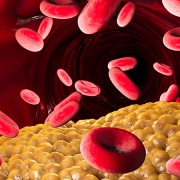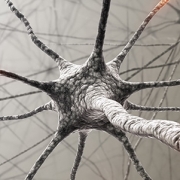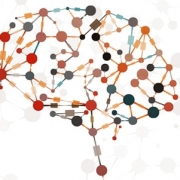Transcriptomics and mental illness
We look beyond the genome to find out how RNA can impact on the presentation of psychiatric conditions
A new study into the genomics of mental illnesses has shed light on why disorders with seemingly similar genomic roots can result in such a wide variety of symptoms.
The study, which looked at three mental illnesses with a similar genetic basis, found that changes in the transcriptome, or RNA, correlated more closely with the presentation of those conditions than those at the genomic level.
Diverse disorders, similar routes
“Schizophrenia, bipolar disorder, and major depressive disorder share common genetic roots, but each disorder presents differently in each individual,” explained Dr Francis McMahon, head of the Human Genetics Branch at the US National Institute of Mental Health (NIMH), which produced the research. “We wanted to investigate why disorders present differently, despite this seeming genetic similarity.”
Genome-wide association studies have shown that many loci in the genome are associated with the chance of developing two or more clinically different mental illnesses. So, what causes these conditions to present so differently, despite having the same genomic basis?
In search of a cause
Dr McMahon and his colleagues looked at cells from a part of the brain called the subgenual anterior cingulate cortex, which is known to be involved in mood disorders, impulse control and emotion regulation. They studied 200 post-mortem tissue samples from people who had been diagnosed with schizophrenia, bipolar disorder or major depressive disorder, as well as a control group of people who had no history of mental illness.
The team sequenced the cells’ genomes (DNA), but also their transcriptomes (RNA). This allowed them to see the genes that were being expressed as well as the exact proteins that were being made as a result. But how does the transcriptome affect which proteins are created by our cells?
From gene to protein
There are a number of different stages involved in making a protein. In the transcription stage, the DNA sequence of a gene is copied into messenger RNA (mRNA). A process called splicing then removes non-coding regions, called introns, and stitches the remaining regions, called exons, together into a single sequence. These sequences can then be translated into proteins.
A given sequence does not need every exon to make the target protein, however; exons are modular units that can be combined to make several different proteins, all coded for by the same gene. Consequently, the structure and function of the protein can be affected by how the RNA is spliced and which exons are included, even though the gene itself remains the same.
Differences in the transcriptome
The NIMH group’s results, published in Neuropsychopharmacology, showed that there were differences in the transcriptomes of those with different illnesses, as well as differences between those with an illness and the control group.
“Most transcripts that were expressed differently – produced in higher versus lower levels – turned out to be expressed in opposite directions in people with different disorders. Some transcripts were expressed in the same direction in individuals with mood disorders and the opposite direction in individuals with schizophrenia,” said Dr McMahon.
One example was SMARCA2: a gene associated with autism spectrum disorder, known to regulate pathways crucial to neuronal development. Samples from people with schizophrenia and bipolar disorder were compared and were found to have distinct RNA transcripts.
These differences suggest that diagnostic categories of mental illness are much more closely related to changes in the transcriptome than those observable at the genomic level.
There is still much to learn about the nature of mental illness, but studies such as this one show that progress is being made in understanding the nuances of these conditions. More personalised and effective treatment options may be available in the future as a result.
Learn more about the transcriptome and other ‘omes’ in our cut-out-and-keep guide.
–
Please note: This article is for informational or educational purposes, and does not substitute professional medical advice.









